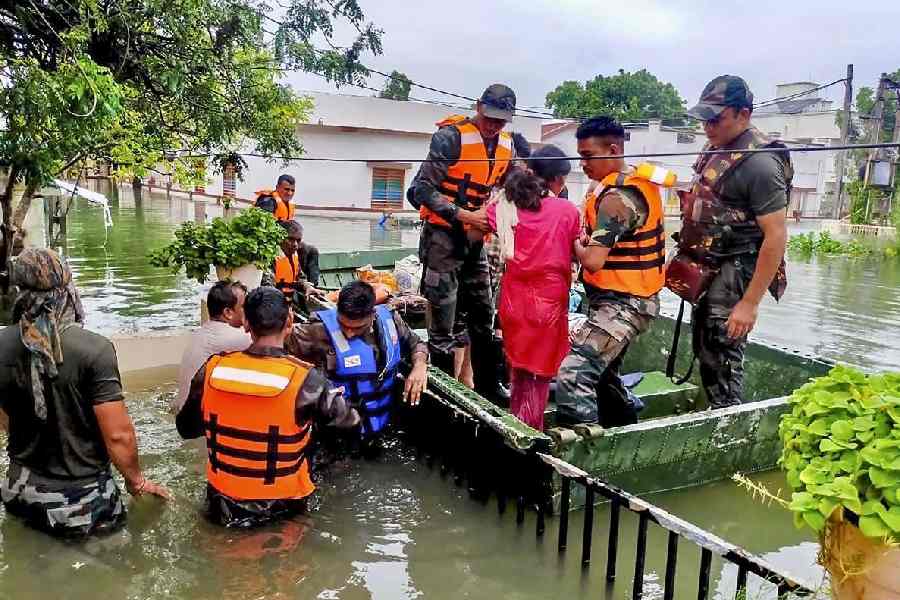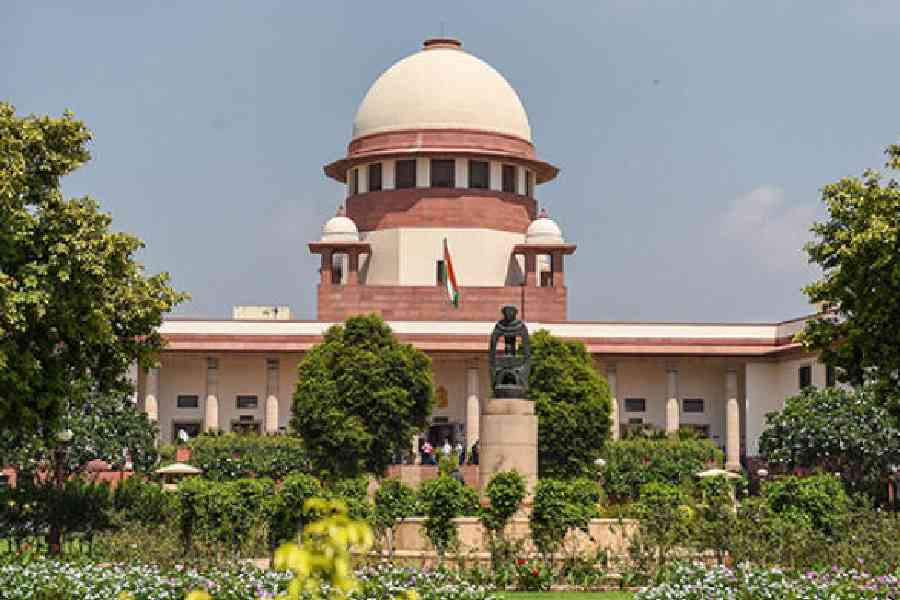An analysis of recent flooding in parts of Gujarat showed that it was caused by severe weather conditions and exacerbated by extensive urban development, altered elevations and compromised drainage patterns, researchers at the Indian Institute of Technology Gandhinagar (IIT-GN) have said.
Parts of Gujarat witnessed flooding due to heavy rains between August 20 and 29.
During this period, 15 out of the 33 districts in the state recorded three-day rainfall totals exceeding their 10-year return period - a statistical measure indicating the average interval between such intense events - with Jamnagar, Morbi, Devbhumi Dwarka, and Rajkot experiencing levels above their 50-year thresholds, the analysis showed.
The recurrence of "unusual weather events along India's western coast", such as the one witnessed last week, highlights the urgent need to reassess urban planning and infrastructure resilience. This scenario underscores the need for robust and scalable emergency response strategies that can handle the complexities of concurrent extreme events, researchers at IIT Gandhinagar's Machine Intelligence and Resilience Laboratory (MIR Lab) said.
"As rapid urbanisation continues to modify regional and local hydrology, placing greater strain on drainage systems, it is crucial to keep hydrology at the core of urban development strategies," the researchers observed.
Vadodara, which grappled with severe flooding after heavy rains last week, suffered from the situation despite rains not being unprecedented in magnitude, the IIT-GN research said.
"However, the flooding was likely exacerbated by extensive urban development in flood-prone areas, altered elevations, and drainage patterns compromised due to rapid urbanisation and clogged drainage systems," it said.
"This situation is a classic example of concurrent extreme events, where multiple regions experience severe weather simultaneously. Such concurrence complicates emergency response and evacuation efforts as resources become stretched across multiple affected areas," the study said.
Demands for rescue, relief, and evacuation operations in such a scenario can overwhelm emergency services, making it more challenging to respond effectively and efficiently to the needs of those impacted by the floods, it said.
"This underscores the need for robust and scalable emergency response strategies that can handle the complexities of concurrent extreme events," it added.
The analysis of maximum rainfall during this period revealed that Gujarat's Devbhumi Dwarka and Morbi in the state's Saurashtra region experienced rainfall over a one-day period last week that surpassed their 50-year "return period" (with Dwarka exceeding 100-year period).
Twelve of the state's 33 districts experienced one-day rainfall totals that exceeded the 10-year return period, it said.
The situation became even more critical over two-day periods, with 17 districts exceeding the 10-year return period, including Jamnagar, Morbi, and Devbhumi Dwarka, where rainfall surpassed 50-year return levels, according to the researchers.
Additionally, 15 districts recorded three-day rainfall totals exceeding the 10-year return period, with Jamnagar, Morbi, Devbhumi Dwarka, and Rajkot all experiencing levels above their 50-year thresholds.
Assistant Professor in Civil Engineering and Computer Science and Engineering at IIT Gandhinagar, Udit Bhatia, said the granularity of the available data may not fully capture the nuances of urban flooding, which often results from short-duration, high-intensity rainfalls that overwhelm city drainage systems.
"When rainfall persists for longer durations, the soil becomes saturated during the initial spells, and subsequent rainfall is more likely to contribute directly to surface runoff. This runoff exacerbates flooding, especially when drainage systems are either incapacitated or unhealthy," said Bhatia, who is the Principal Investigator at the MIR Lab.
Except for the headline, this story has not been edited by The Telegraph Online staff and has been published from a syndicated feed.











